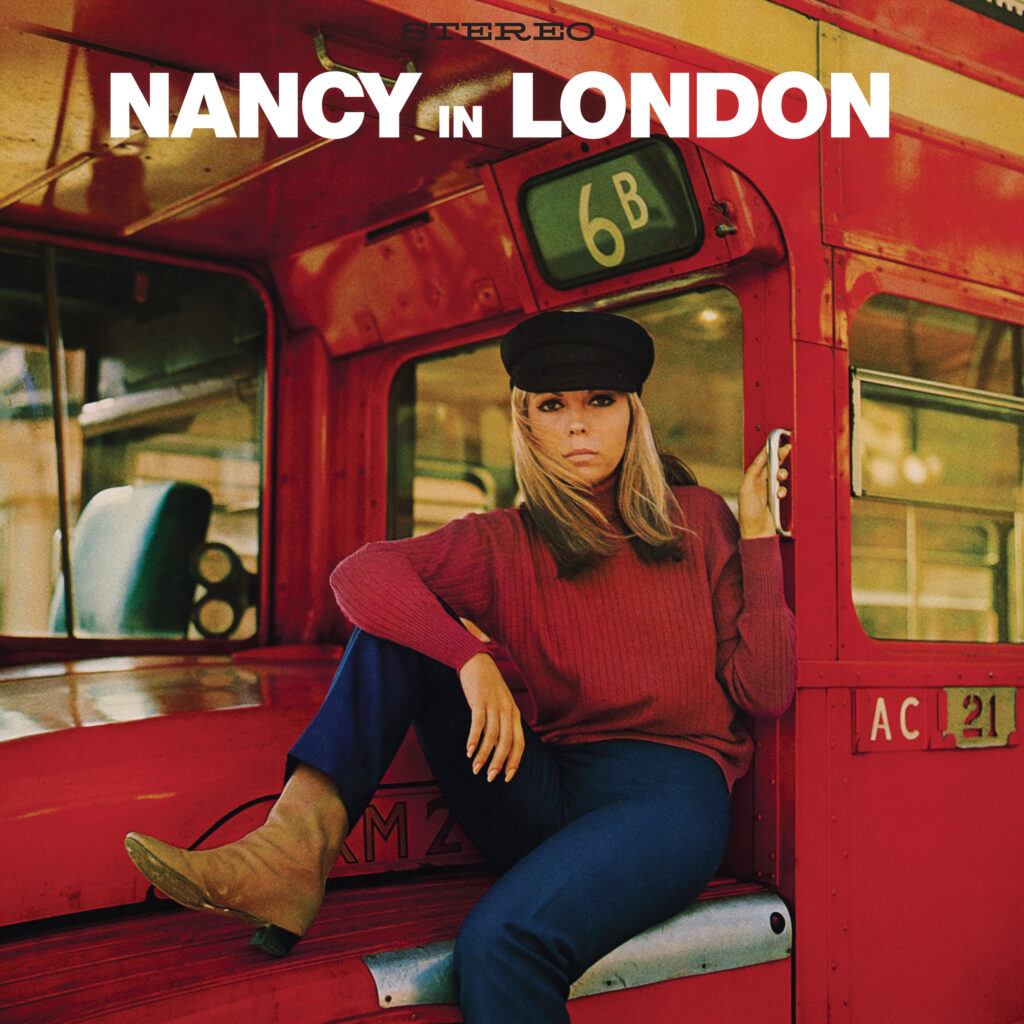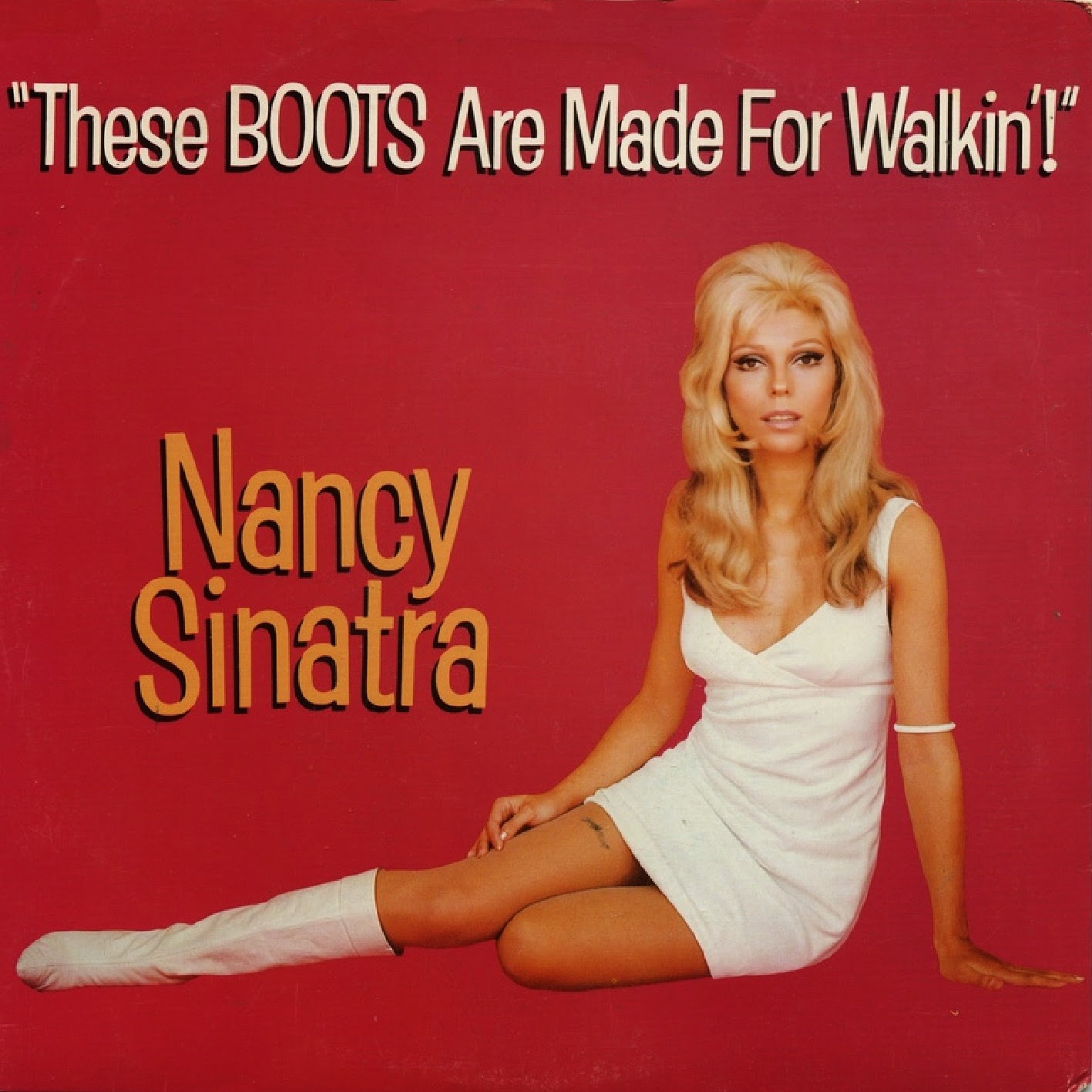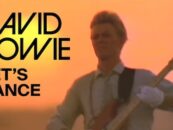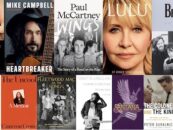Nancy Sinatra on Recording in the ’60s, Her TV Special & Her Go-Go Wardrobe
by Harvey Kubernik The acclaimed archival label Light in the Attic (LITA) continued its Nancy Sinatra Archival Series partnership with the legendary singer, actress, activist and icon Nancy Sinatra in 2024 with a definitive reissue of her 1966 album Nancy In London. Originally released on the heels of her hit debut LP, Boots, and its follow-up How Does That Grab You?, the London sessions were cut during April 27-29 with engineer Eddie Brackett at Pye Studios, where the Kinks, Petula Clark and David Bowie also recorded in the mid-1960s. These recordings, produced by frequent Sinatra collaborator Lee Hazelwood, arranged by Billy Strange and conducted by Johnny Harris, have an unequivocally British feel.
The acclaimed archival label Light in the Attic (LITA) continued its Nancy Sinatra Archival Series partnership with the legendary singer, actress, activist and icon Nancy Sinatra in 2024 with a definitive reissue of her 1966 album Nancy In London. Originally released on the heels of her hit debut LP, Boots, and its follow-up How Does That Grab You?, the London sessions were cut during April 27-29 with engineer Eddie Brackett at Pye Studios, where the Kinks, Petula Clark and David Bowie also recorded in the mid-1960s. These recordings, produced by frequent Sinatra collaborator Lee Hazelwood, arranged by Billy Strange and conducted by Johnny Harris, have an unequivocally British feel.
“With great songs and wonderful musicians, Nancy In London is my favorite of my ’60s records,” said Sinatra in an announcement.
Arriving in August 1966, during a period of extraordinary productivity, Nancy In London was Sinatra’s third of three albums released that year. Her star rose with best-selling albums (including those with Hazlewood) and such hit singles as “These Boots Are Made for Walkin’,” “Sugar Town” (1966), “Somethin’ Stupid” (a 1967 duet with her father, Frank Sinatra), and the 1967 James Bond film theme “You Only Live Twice.”
Sinatra returned to London in October 1969 to work with producer Mickie Most. LITA’s reissue of Nancy In London presents all of the previously unheard tracks that she recorded with Most during these sessions in their entirety.
In an interview with reissue producer Hunter Lea, Sinatra said, “Mickie was funny. He would bring in people off the street to have them sing on the records. He wanted that raw, unrehearsed, kind-of-crazy feel…I loved those songs.”
Three recordings heard on Nancy In London were done at United Recorders in Hollywood July 10-11, 1969.
I interviewed Sinatra in 2021 about her London and L.A. recordings, her trendsetting wardrobe and her fantastic TV special, Movin’ With Nancy.
Listen to “Friday’s Child” from Nancy in London
Best Classic Bands: You recorded “You Only Live Twice,” the theme to a James Bond movie of the same name, in London at CTS studios in May 1967 with producer/composer John Barry. Leslie Bricusse penned the lyrics. Tell me about that session.
Nancy Sinatra: [Film producer] Cubby Broccoli had requested that I do the title song for the movie. I felt it was a huge stretch for me and I suggested they call Shirley Bassey, who had sung “Goldfinger,” back in (laughs). They wanted me to do it. So, I went to London. We did the initial session with Leslie Bricusse in the booth and John Barry conducting the huge, pretty much symphonic orchestra. I definitely liked singing with the orchestra. And John wisely said to me after seeing me struggling, “Would you like me to record the track and we’ll do your vocals later?” And I said, “Oh yes, please.” And that is what we did. That was such a relief. Later I found out what they did was they edited different parts of the recording, the overdub sessions, so they could actually have a complete take, because vocally I was just all over the place. I was right about not being the right person to sing that thing. But I’m not complaining. It did very well. Barton [Lee Hazlewood’s given first name] then did a change to try and make a chart record out of it; he knew that the philharmonic sound was not gonna get it. So, he brought in the Wrecking Crew musicians and we re-recorded the song with a more rock ’n’ roll guitar-based feel to it and it did make the charts.
Listen to “You Only Live Twice”
What do you remember about the United Recorders studio in L.A. that you employed for your Lee Hazlewood and Billy Strange collaborations?
The room was filled with musicians. Other times it was just me in that room with a microphone and headset. It’s a long time ago…The engineers were great and my experience was with Eddie Brackett. Eddie was just brilliant. He knew my voice quickly and he enhanced things beautifully. One of the essential parts of recording in those days was the tape reverb, which for people who don’t know is a way of creating a kind of compounded echo chamber. Digital just does not have the sound that analog had.
Your wardrobe was designed by Jack Hanson and Sally Hanson, who owned Jax, a Beverly Hills boutique. You had an eye for fashion: photo shoots, LP covers, stage, television specials and TV appearances. When you veered into the adult world of 1965 and ’66, away from what you’ve called the “Nancy Nice Lady Voice” of your earlier recordings, did you know how important wardrobe was to your musical identity? In 1966 you were wearing clothing that really hadn’t been in stateside retail shops and became the Hollywood go-go icon.
The interesting part in all of that is you can blame it all on one thing, which is the mini-skirt. The beginnings of that fashion trend happened concurrently with “Boots” and Twiggy and Jean Shrimpton bringing the short skirts to America. I was in England at Mary Quant, buying them and bringing them home. I would go to the Daisy, Jack Hanson’s club in Beverly Hills, and dance at night. I’d be in a mini-skirt and I’d get smart aleck remarks from people in the club, “Are you gonna play tennis tonight? It’s too dark.” That kind of stuff. But it did not take long because the trend took off so fast and we never looked back. Let’s face it, the mini-skirt is still with us.
Related: The story behind “These Boots Are Made for Walkin'”
I love your television special, Movin’ With Nancy, which aired in December 1967 on NBC-TV. It included duets with your dad, Dean Martin and Sammy Davis Jr. There are scenes with Lee Hazlewood and outdoor location shooting all over California. It was produced and directed by Jack Haley Jr. David Winters did the choreography. Billy Strange supplied the music. Frank Sinatra Jr. has a cameo and Terri Garr is a dancer. It’s really marvelous.
Jack had approached me before that concept. I didn’t have anything to work with him on. So, when RC Cola gave me like $600,000, or $400,000, to sponsor the show, “Go make a special,” that’s like peanuts. But what I wanted to do was make it on film because I hated the static in TV studio specials that were the norm for the day. I didn’t want to make one of those: “And now here is our guest.” Ridiculous. So, I talked to Jack about it and said, “Would you be able to put a music special on film and keep it in an hour format?” Which is like 52 minutes or something with commercials. And he said, “Yes, but I’d want to direct it.” I said “OK, then direct it.” It was interesting at the time because, ironically, the Monkees were doing what I wanted to do on their television series. And their show had the elements of what I wanted for my special. So, it wasn’t as though my show was unique or groundbreaking, because the Monkees were doing the same thing at the time. It was like a thought went out in the ether and both groups of people grabbed it and made filmed musical stuff. We decided to do it up and down the coast of California because it had to be a moving kind of feel. And we had such a budget that we couldn’t fly in a whole crew anywhere. We were limited to 16 millimeter film because of the expense of 35 millimeter. So, Jack got some of his crew from the David Wolper Company. He was doing biographies for Wolper at the time, and he got Vilis Lapenieks, the cinematographer, and a 16 millimeter camera and off we went like a band of gypsies. He worked with Tom Mankiewicz on the script, which essentially would be a guideline. It’s quite something but it’s not earthshaking to a lot of people now.
Watch the entire Movin’ WIth Nancy TV special, commercials and all!
Sinatra’s Light in the Attic reissues are available in the U.S. here, in Canada here and in the U.K. here. Author and music journalist Harvey Kubernik’s books are available in the U.S. here, in Canada here and in the U.K. here.







2 Comments so far
Jump into a conversationGreat piece – I’ve always wondered about the genesis of “These Boots…” Fascinating, the involvement of Jack & Sally Hanson and Jax. Definitely one of the milestone moments of the mid-60s! Thank you.
It’s great to see articles like this because given Nancy’s spectacular pop success, we tend to forget what a consummate artist and professional she is. That golden alto voice could melt you down, and she could use it like a blunt instrument.